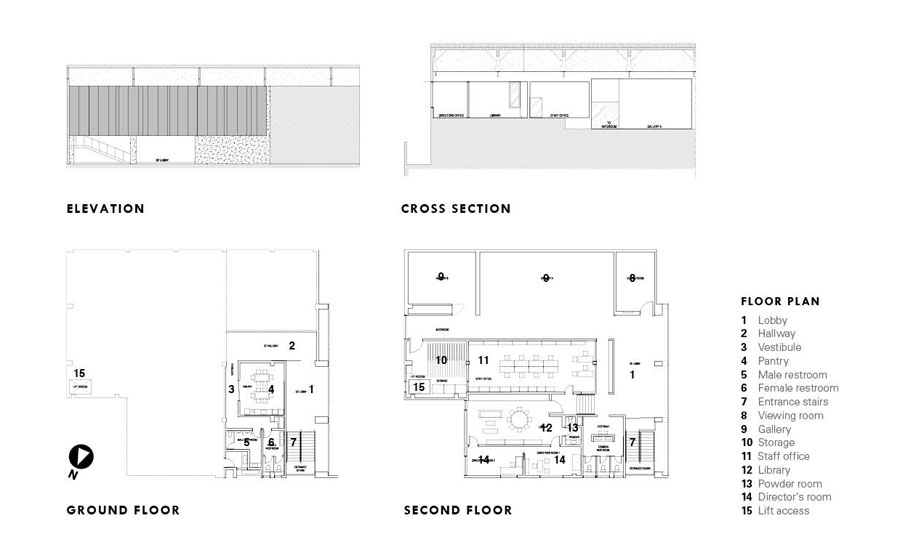
Silhouettes and a silvery glow welcome visitors to the new Silverlens
Drills burred, steel tape snapped to place, and lasers shot across white walls to level artwork. Artist Bernardo Pacquing fluffed cotton on an old piano installation in the corner while Ryan Villamael’s paper cutouts sat bubble-wrapped in a table in the middle of the room. Gallery director Rachel Rillo stepped out of her office to savor the busyness, which she dubs her favorite part of shows. “What’s still missing?” she then calls out. “One more Maria (Taniguchi)!” co-director Isa Lorenzo replies from the opposite hall. This hubbub is the setting up of Silverlens Galleries’ inaugural exhibition, held in their new space early in 2017.
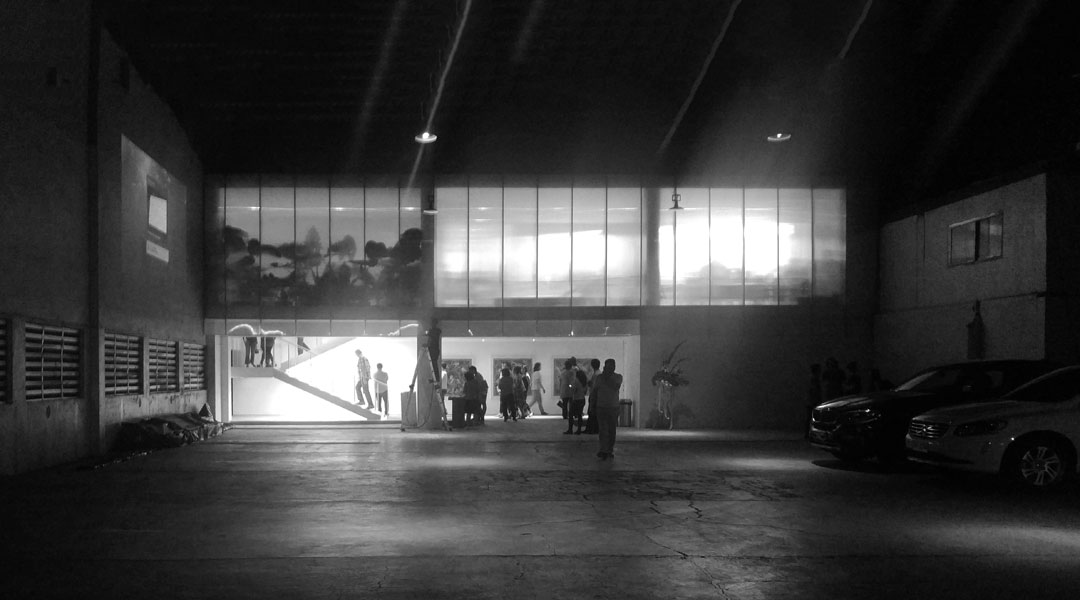


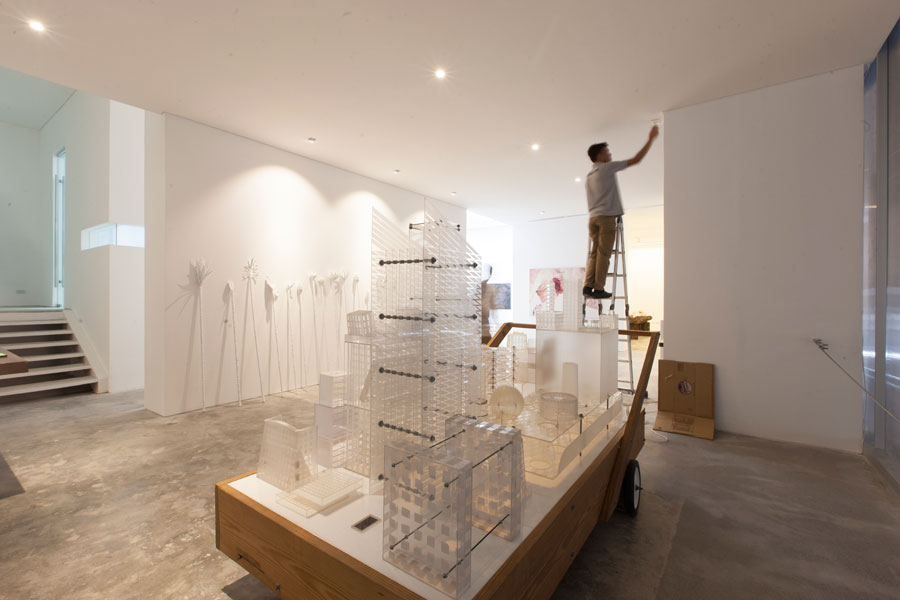
Located in Lapanday Center along Pasong Tamo Extension, only a kilometer from their old space, the new two-storey gallery makes use of a former Pancake House commissary. This adaptive reuse was designed by Anna Sy of C|S Design Consultancy, who Rillo and Lorenzo have worked with all throughout the existence of Silverlens. “Successful but very unassuming,” Sy describes her clients. “I wanted the space to reflect that.”
READ MORE: Old Jaro city hall restored and now National Museum satellite
Standing deep in the warehouse is a white vestibule; its immaculateness emphasized by an austere parking lot and iridescence heightened by night. The 20-meter facade is composed of a span of translucent window panels on the second floor and a stairwell leading up that looks cantilevered from the wall. “When the interior lights are on, silhouettes of visitors as well as the artworks are discernible, heightening the dramatic impact with a silvery glow,” says Sy. “It is done with a subtlety that bespeaks Silverlens as the premier art gallery in the local art world, one that values simplicity of setting only as a means of bringing to the foreground the magnificence of the work it so proudly displays.”
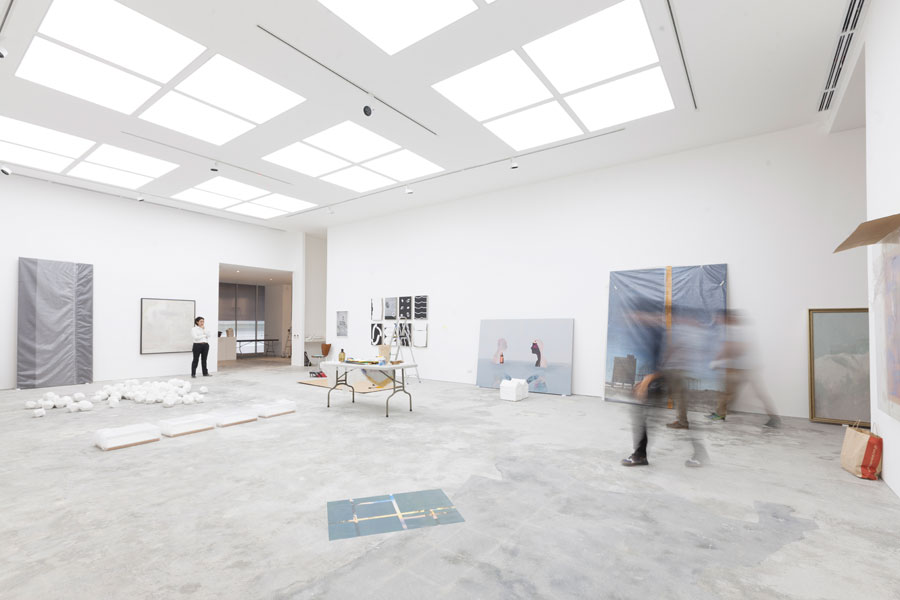
The first floor of the building contains a kitchen, administration areas, and provisions for artist studios. Upon entering the main space on the second floor, one is welcomed by a lobby that feeds into the main and secondary galleries, viewing rooms, library, and offices. “The reception area is a generous gesture by the architect because it tells you this is not just a gallery,” says Lorenzo. While the elevation was an easy decision (clients and architect all drawn to one of the two proposed schemes), there were back and forth discussions regarding the interior layout. In addition, the working timeline was reduced from six to three and a half months so contractor Aquis Construction had to take on long shifts and work through the holidays.

“It is a difficult thing—designing art spaces. They are, after all, just vessels or settings, if you will. Anna successfully translates this with her use of lines and proportion. The spaces interact with the next almost rhythmically,” says Rillo. On top of an assured use of volumes, Silverlens employs special lighting. As they conceptualized the gallery, Rillo and Lorenzo consulted the artists they represent about improvements they wanted. The consensus: better light. The main gallery with a 4.5-meter high ceiling is topped by a grid of custom-made LED fixtures. Light temperature can be adjusted from very warm (3000 K) to very cool (6000 K) using a mobile app. The secondary gallery uses a panel of the same type coupled with track lights for more spot lighting. Tubular fixtures from the old space were carried over to the viewing rooms and library.
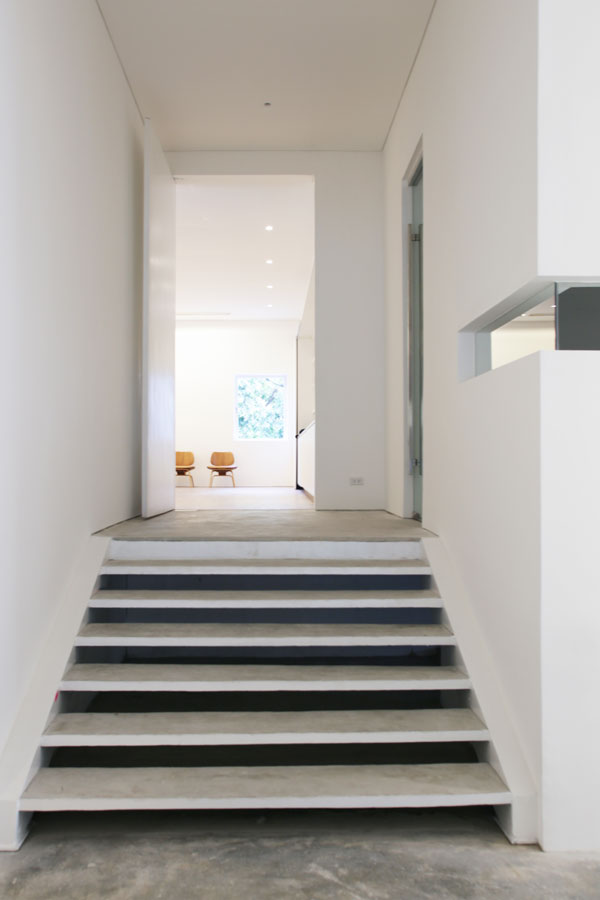

After the initial “wow,” the novelty takes a back seat—precisely what good gallery lighting should do as the art is the focus of any exhibit. What the directors are most happy about is how, with the adjustment of light, the space can look full in cases of shows composed of only a few pieces or a single installation. “The space, along with all its facets, is there but it is also not there,” says Rillo. Silverlens-represented artists had their preview one day before our visit and it, too, was a frenzy. Lights pulsed as each one had time with the mobile app remote. Patty Eustaquio sprawled on the floor to draw something while Pow Martinez set up his mini-studio in a room downstairs. Immediately, there was creative energy hinting that Philippine Art will enjoy its new stage. ![]()
